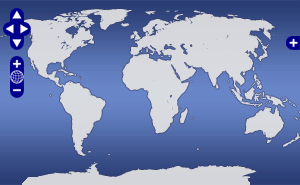Sediment chemistry (GeoTIFF grid format) from surface carbon and nitrogen analysis of sediment grab samples, Long Island Sound mapping project Phase II
Sediment grab samples were taken in summer of 2017 and 2018 using a modified van Veen grab sampler. A sub-sample of the top two centimeters was stored in a jar. Dried and homogenized splits of the samples were sent to the Cornell Isotope Laboratory (COIL) to be analyzed for carbon and nitrogen concentrations as well as stable isotopic compositions. Total carbon (TC), total nitrogen (TN), and δ15N were determined on an aliquot of untreated, dried homogenized sediments. In order to accurately determine total organic carbon (TOC) and δ13C, removal of carbonate is necessary. This was achieved through sequential treatments of the sediments with dilute hydrochloric acid until no bubbling was observed. The acidified sediments were then rinsed in deionized water and re-dried. In the Cornell Lab the samples were analyzed using a NC2500 elemental analyzer interfaced with a Thermo Delta V isotope ratio mass spectrometer (IRMS). ArcGIS Pro empirical kriging has been used to interpolate values for organic carbon, total carbon, nitrogen, d13C and d15N isotope content onto a 50 m raster. The interpolated raster has been clipped to fit the extent of the phase 2 survey area. The final raster data files are in GeoTIFF grid format with UTM-18 N projection.Funding was provided by the Long Island Sound Mapping Fund administered cooperatively by the EPA Long Island Sound Study and the Connecticut Department of Energy and Environmental Protection (DEEP).
Nitsche, Frank O.
Investigator
LDEO
Kenna, Timothy
Investigator
LDEO
McHugh, Cecilia
Investigator
CUNY:Queens College
Device Info
Sampler:
Van Veen
Platform
Pritchard (Boat)
Stony Brook University
Data DOI
Quality
2
The data have been processed/modified to a level beyond that of basic quality control (e.g. final processed sonar data, photo-mosaics).
Data Files
Acquisition Information
Data Citation Information
ISO/XML Metadata
Expand

 Map View
Map View

